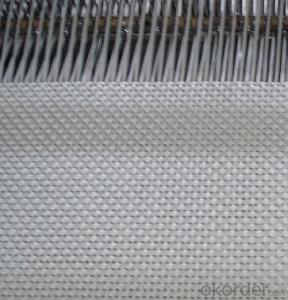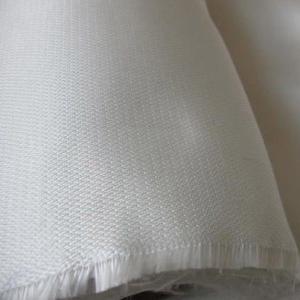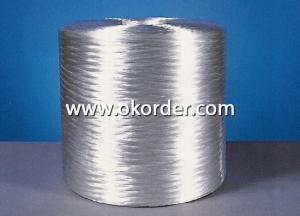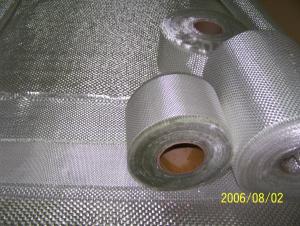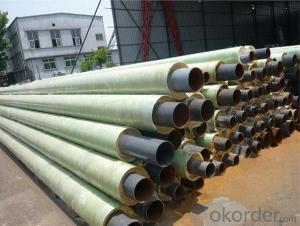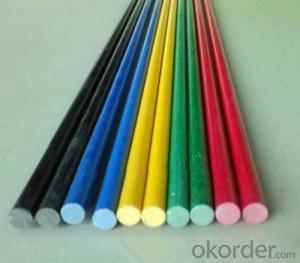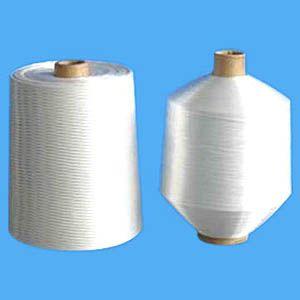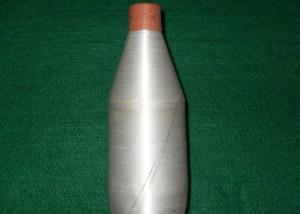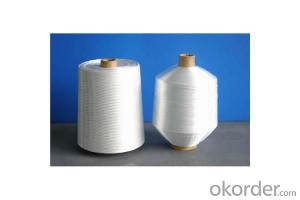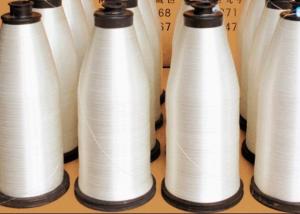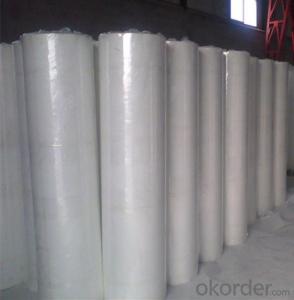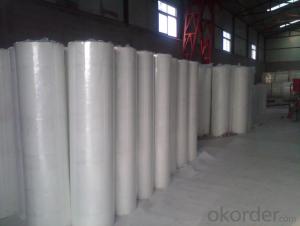Fiberglass Fabric for Corrosion Resistant ISO9001
- Loading Port:
- Shanghai
- Payment Terms:
- TT OR LC
- Min Order Qty:
- 500 m²
- Supply Capability:
- 50000 m²/month
OKorder Service Pledge
OKorder Financial Service
You Might Also Like
Fiberglass Fabric for Corrosion Resistant ISO9001
Fiberglass Fabric Introduction:
Fiberglass fabric is weaved by high quality fiberglass,as a kind of engineering material,which is
many excellent characteristics:
flame-resisting,corrosion resistant,high strength,heat resistance.stable structure,good chemical resistance,durability.
Fiberglass Fabric Features:
Warp and weft yarns are parallel arrangement as flat situation, with uniform tension;
Fiber is aligned with large consistency, stable and easy operation;
Good moldability, fast and complete wet out in resins, resulting in high productivity;
Good transparency and high strength of composite products.
Fiberglass Fabric Specification:
mark | Fiber consistency(ends/ cm) |
Area weight (g/ m2) |
Thick-ness (mm) |
Width (cm) |
Length (mm) | Breaking strength(N)≥ |
weave | |||
Warp direction | Weft direction | Warp direction | Weft direction | |||||||
EW200 | 16 | 12 | 200±20 | 0.2 | 90-130 | 300-1200 | 980 | 980 | ||
EW210 | 16 | 12 | 200±20 | 0.21 | 90-130 | 300-1200 | 1080 | 1080 | Twill weave | |
Plain weave | ||||||||||
EWR360 | 3.2 | 1.8 | 354±18 | 0.35 | 50-300 | 100 | 2000 | 2000 | ||
EW280 | 16 | 10 | 280±28 | 0.26 | 90-130 | 300-1200 | 1800 | 1800 | ||
EW300 | 14 | 10 | 320±32 | 0.3 | 90-130 | 300-1200 | 1500 | 1500 | ||
EW430 | 20 | 12 | 420±42 | 0.43 | 90-130 | 300-1200 | 2000 | 2000 | Broken twill | |
EWR136 | 10 | 10 | 136±13 | 0.136 | 100 | 200 | 850 | 850 |
Plain weave | |
EWR200 | 8 | 7 | 200±20 | 0.21 | 100 | 200 | 1200 | 1200 | ||
EWR400 | 3.6 | 3.2 | 400±30 | 0.4 | 100 | 50-100 | 2500 | 2500 | ||
EWR600 | 2.6 | 2.5 | 600±50 | 0.6 | 100 | 40KG | 4000 | 4000 | ||
EWR580 | 2.5 | 2.3 | 576±29 | 0.58 | 100 | 40KG | 3850 | 3850 | ||
EWR800 | 1.8 | 1.8 | 800±60 | 0.8 | 100 | 40KG | 4600 | 4600 | ||
Product Show
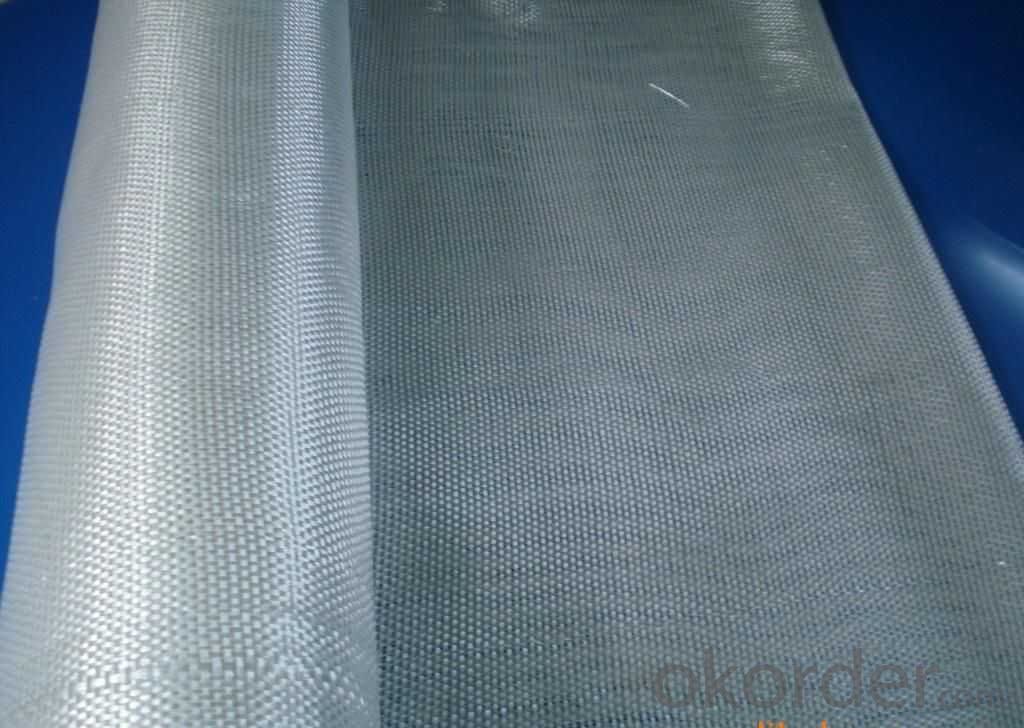
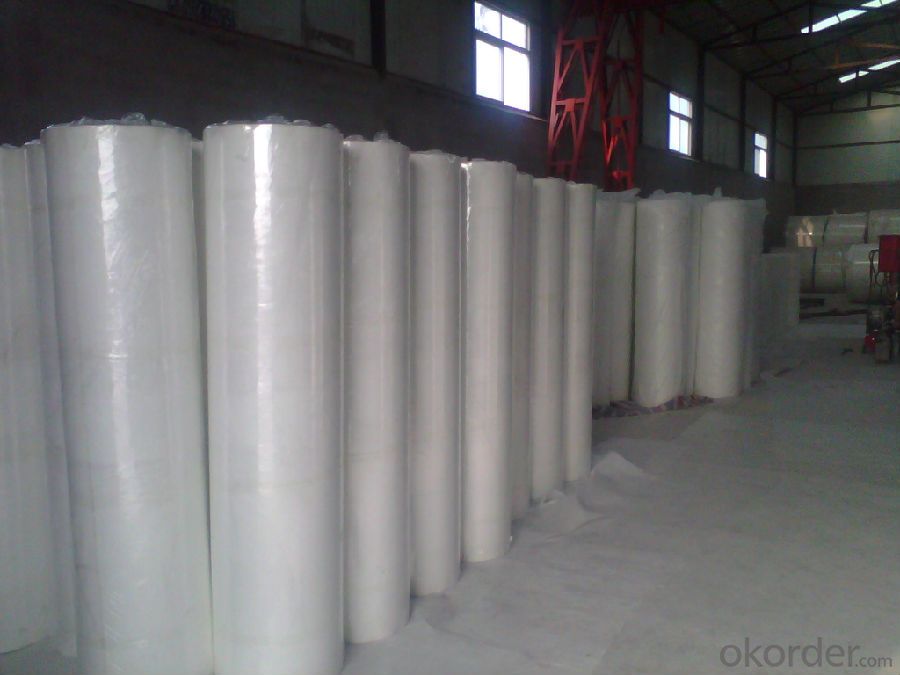
Fiberglass Fabric Usage:
E-glass woven roving is a schistose double faces reinforcement fabric that is weaved into from roving in directly.
E-glass fiber fabric (thin fabrics with thickness from 0.025 to 0.09mm) is suitable for electrical isolation mica product, wax cloth as the reinforcement materials.
E-glass woven roving applys to all kinds of polyester reinforcement system, (such as unsaturated polyester resin, vinylite,epoxy resin and phenolic resin.
E-glass woven roving is a high performance reinforcement material. It is widely used in hand lay-up and machinery processing products, (such as vessel, container, airplane and vehicle component, furniture, athletic facilities and other industry.
FAQ
1.Package of Fiberglass Fabric?
Fiberglass fabric is wound on a paper tube with inner diameters of 50. 8, 76 or 152mm. Each roll is wrapped in a plastic bag, then to be packed in a carton box. The rolls are to be horizontally placed.
Width (cm): 90, 100, 127
Length (m): 100, 200, 300, 400
2.Storage of Fiberglass Fabric?
Store rolls in a cool, dry location
Protect rolls from weather and other damage.
3.If sample available if needed?
We aim to offer our customer best Products&Service,samples are allowed if necessary.
- Q:Can fiberglass yarn be used in insulation blankets?
- Insulation blankets can indeed utilize fiberglass yarn. The utilization of fiberglass yarn in the creation of insulation blankets is frequent owing to its remarkable thermal insulation attributes and capacity to withstand high temperatures. Its lightweight nature, durability, and proficiency in capturing air pockets aid in minimizing heat transfer. Furthermore, fiberglass yarn's resistance to moisture, chemicals, and fire renders it an optimal selection for insulation purposes.
- Q:Can fiberglass yarn be used in the production of gaskets and seals?
- Gaskets and seals can be produced using fiberglass yarn. This versatile material possesses exceptional heat resistance, high tensile strength, and commendable chemical resistance. These attributes render it suitable for diverse industrial uses, including gaskets and seals. By weaving or braiding fiberglass yarn, robust and long-lasting gaskets and seals can be manufactured, capable of enduring high temperatures and effectively preventing leaks or fluid transfer. Moreover, fiberglass yarn can be blended with other materials or coatings to enhance its performance and tailor it to specific requirements. In summary, utilizing fiberglass yarn in the production of gaskets and seals provides a cost-effective and dependable solution for various sealing applications in sectors like automotive, aerospace, and manufacturing.
- Q:How does the resistance to fatigue of fiberglass yarn compare to other materials?
- Fiberglass yarn has a high resistance to fatigue compared to other materials. It is known for its durability and ability to withstand repeated stress and strain without breaking or losing its strength. This makes it an excellent choice for applications where fatigue resistance is crucial, such as in the construction industry or for reinforcing materials in composites.
- Q:Can fiberglass yarn be used for reinforcement in pipes?
- Yes, fiberglass yarn can be used for reinforcement in pipes. Fiberglass yarns are known for their high strength and excellent resistance to corrosion and chemicals. When used as reinforcement in pipes, fiberglass yarns provide increased structural integrity and durability. They can help improve the overall performance of pipes by reducing the risk of cracking, leaking, and other structural failures. Additionally, fiberglass yarns can withstand high temperatures, making them suitable for applications where pipes are exposed to heat. Overall, using fiberglass yarn for reinforcement in pipes can enhance their mechanical properties and extend their lifespan.
- Q:Can fiberglass yarn be used in composites?
- Composites can utilize fiberglass yarn as a valuable component. This textile material is crafted from delicate glass fibers and is commonly employed as a reinforcement in composite materials. These materials are created by combining multiple substances to generate a new material with enhanced properties. Within composites, fiberglass yarn is typically employed as a reinforcement alongside a matrix material like a resin or polymer. The yarn contributes strength and rigidity to the composite, while the matrix material binds the fibers together and facilitates load transfer. Utilizing fiberglass yarn in composites presents numerous benefits. Firstly, it possesses impressive tensile strength, making it an effective reinforcement material. It also exhibits excellent resistance to chemicals, moisture, and high temperatures, rendering it suitable for diverse applications. Furthermore, fiberglass yarn can be effortlessly woven or knitted into various fabric forms, such as plain weave, twill weave, or satin weave. This flexibility allows for the creation of diverse composite structures. Additionally, it can be combined with other reinforcement materials, such as carbon fiber or aramid fiber, to create hybrid composites with customized properties. In conclusion, fiberglass yarn is a versatile and extensively employed reinforcement material in composites. It offers exceptional strength, durability, and resistance to various environmental conditions.
- Q:Can fiberglass yarn be used for making insulation boards?
- Fiberglass yarn is indeed suitable for the production of insulation boards. This material is frequently utilized as a reinforcement in insulation boards due to its remarkable thermal insulation qualities and resistance to fire. It can be transformed into a fabric through weaving or knitting techniques, which subsequently serves as the foundation material for insulation boards. By incorporating fiberglass yarn, the insulation board gains both strength and durability, enabling its use in a wide range of applications within the construction and industrial sectors. Furthermore, fiberglass yarn possesses non-toxic properties and is highly resistant to moisture, rendering it an optimal selection for insulation boards that demand exceptional performance and longevity.
- Q:Can fiberglass yarn be used for knitting?
- Certainly! Fiberglass yarn is indeed suitable for knitting purposes. Although it is typically associated with industrial uses, this type of yarn is also employed in crafting and textile projects. It possesses distinct characteristics like strength, durability, and resistance to heat, chemicals, and abrasion. Nevertheless, it is essential to exercise caution when knitting with fiberglass yarn because it can be sharp and cause skin irritation. Therefore, it is advisable to wear protective gloves and employ proper handling techniques. Additionally, it is worth noting that fiberglass yarn may not provide the same level of softness or comfort as traditional yarns. Therefore, it may be more suitable for projects that prioritize functionality over comfort, such as outdoor accessories or items that require enhanced strength.
- Q:Can fiberglass yarn be used in geotextiles?
- Yes, fiberglass yarn can be used in geotextiles. Fiberglass yarn is known for its strength, durability, and resistance to chemicals and abrasion, making it a suitable material for geotextiles. Geotextiles are used in various civil engineering applications, such as erosion control, soil stabilization, and drainage systems. The use of fiberglass yarn in geotextiles helps to provide reinforcement, filtration, and separation functions, ensuring the longevity and effectiveness of these applications.
- Q:Is fiberglass yarn suitable for making boat hulls or decks?
- Yes, fiberglass yarn is indeed suitable for making boat hulls or decks. It is a strong and durable material that offers excellent resistance to water, corrosion, and UV rays. The fiberglass yarn can be woven or combined with other materials to form a composite structure, making it an ideal choice for boat construction due to its lightweight nature and high strength-to-weight ratio. Additionally, fiberglass yarn allows for flexibility in design and can be molded into various shapes and sizes, making it a versatile option for boat hulls or decks.
- Q:Can fiberglass yarn be used for making swimwear?
- Swimwear can indeed be made using fiberglass yarn. Fiberglass, known for its strength and durability, exhibits resistance against water and chemicals. Consequently, it offers exceptional support and maintains its shape, making it an ideal choice for swimwear. Moreover, fiberglass yarn is lightweight and possesses a smooth surface, which guarantees a comfortable and streamlined fit. Nevertheless, it is crucial to acknowledge that fiberglass may cause skin irritation, necessitating the usage of appropriate lining or coating to ensure safety and comfort.
1. Manufacturer Overview |
|
|---|---|
| Location | |
| Year Established | |
| Annual Output Value | |
| Main Markets | |
| Company Certifications | |
2. Manufacturer Certificates |
|
|---|---|
| a) Certification Name | |
| Range | |
| Reference | |
| Validity Period | |
3. Manufacturer Capability |
|
|---|---|
| a)Trade Capacity | |
| Nearest Port | |
| Export Percentage | |
| No.of Employees in Trade Department | |
| Language Spoken: | |
| b)Factory Information | |
| Factory Size: | |
| No. of Production Lines | |
| Contract Manufacturing | |
| Product Price Range | |
Send your message to us
Fiberglass Fabric for Corrosion Resistant ISO9001
- Loading Port:
- Shanghai
- Payment Terms:
- TT OR LC
- Min Order Qty:
- 500 m²
- Supply Capability:
- 50000 m²/month
OKorder Service Pledge
OKorder Financial Service
Similar products
New products
Hot products
Related keywords
